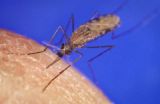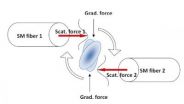(Press-News.org) Researchers have identified four new genetic regions that influence birth weight, providing further evidence that genes as well as maternal nutrition are important for growth in the womb. Three of the regions are also linked to adult metabolism, helping to explain why smaller babies have higher rates of chronic diseases later in life.
It has been known for some time that babies born with a lower birth weight are at higher risk of chronic diseases such as type 2 diabetes and cardiovascular disease. Three genetic regions have already been identified that influence birth weight, two of which are also linked to an increased susceptibility to type 2 diabetes.
The latest study analysed almost 70,000 individuals of European, Arab, Asian and African American descent from across 50 separate studies of pregnancy and birth. Their findings confirmed the three regions previously identified and also revealed four new genetic regions that are associated with birth weight. The study was part-funded by the Wellcome Trust, the Netherlands Organisation for Scientific Research, the European Union, the Medical Research Council (UK), the Academy of Finland and the National Institute of Health (USA).
One of the new genetic regions is also associated with blood pressure in adulthood, providing the first evidence of a genetic link between birth weight and blood pressure. Two of the regions are known to be linked to adult height, showing that genes involved in growth begin to take effect at a very early stage.
Professor Mark McCarthy, a co-author of the study from the Wellcome Trust Centre for Human Genetics, said: "Our findings add to the growing evidence that events during early growth in the womb can have a significant impact on our health as adults. However, these genes tell only part of the story. It's important that we understand how much is down to genetics and how much is due to the environment in which we grow so that we can target efforts to prevent disease later in life."
It's not clear how the genetic regions identified affect both birth weight and adult metabolism, although the findings do offer some clues as to the biological pathways involved. For example, the two genetic regions linking birth weight with type 2 diabetes risk are also associated with reduced levels of insulin. Insulin is the hormone responsible for regulating sugar levels in the blood, but it is also known to have an important role in early growth.
Dr Rachel Freathy, co-lead author and a Sir Henry Wellcome Postdoctoral Fellow from the University of Exeter Medical School, said: "These discoveries give us important clues to the mechanisms responsible for the control of a baby's growth in the womb, and may eventually lead to a better understanding of how to manage growth problems during pregnancy."
Together, the newly identified genetic regions have a surprisingly large effect on birth weight when compared with known environmental influences. Dr Inga Prokopenko, co-lead author from the University of Oxford explained: "Birth weight is subject to powerful influences from many environmental factors. It was a surprise to see that the genetic effects in combination have a similar impact to that of maternal smoking in pregnancy, which itself is well known to lead to lower birth weight babies."
###The findings are published online today in the journal Nature Genetics. The international research team was led by scientists from the UK, Finland, the Netherlands and the United States.
Struan F.A. Grant, associate director of the Center for Applied Genomics at The Children's Hospital of Philadelphia and one of the co-authors on the study, said: "This study demonstrates that genes acting early in development have important effects on health both in childhood and beyond. While we continue to learn more about the biology, an important implication is that designing prenatal interventions to improve birth weight could have lifelong health benefits."
Genes link growth in the womb with adult metabolism and disease
2012-12-03
ELSE PRESS RELEASES FROM THIS DATE:
An innovation will attach patients' electronic medical record to the foot of their hospital bed
2012-12-03
This press release is available in Spanish.
Information and Communication Technologies (ICT) present tremendous potential in the field of healthcare, according to the researchers. "ICTs are going to contribute to a change in focus in aid and health services," comments Jesús Espinosa, CEO of IonIDE Telematics. According to accreditation and standardization associations, Spain is a leader in the management of clinical processes, because it has the greatest number of hospitals that have adopted electronic medical record (EMR). This computerized registry of patients' social, ...
Corn: Many active genes - high yield
2012-12-03
Hybrid plants provide much higher yield than their homozygous parents. Plant breeders have known this for more than 100 years and used this effect called heterosis for richer harvests. Until now, science has puzzled over the molecular processes underlying this phenomenon. Researchers at the University of Bonn and partners from Tübingen and the USA have now decoded one possible mechanism in corn roots. More genes are active in hybrid plants than in their homozygous parents. This might increase growth and yield of the corn plants. The results are published in the renowned ...
Have Venusian volcanoes been caught in the act?
2012-12-03
Six years of observations by ESA's Venus Express have shown large changes in the sulphur dioxide content of the planet's atmosphere, and one intriguing possible explanation is volcanic eruptions.
The thick atmosphere of Venus contains over a million times as much sulphur dioxide as Earth's, where almost all of the pungent, toxic gas is generated by volcanic activity.
Most of the sulphur dioxide on Venus is hidden below the planet's dense upper cloud deck, because the gas is readily destroyed by sunlight.
That means any sulphur dioxide detected in Venus' upper atmosphere ...
Malaria parasite's masquerade ball could be coming to an end
2012-12-03
More than a million people die each year of malaria caused by different strains of the Plasmodium parasite transmitted by the Anopheles mosquito. The medical world has yet to find an effective vaccine against the deadly parasite, which mainly affects pregnant women and children under the age of five. By figuring out how the most dangerous strain evades the watchful eye of the immune system, researchers from the Hebrew University of Jerusalem have now paved the way for the development of new approaches to cure this acute infection.
Upon entering the bloodstream, the Plasmodium ...
BU, VA study describes 68 CTE cases in veterans, high school, college and pro athletes
2012-12-03
(BOSTON) – A study done by investigators at the Boston University Center for the Study of Traumatic Encephalopathy (CSTE) and the Veterans Affairs Boston Healthcare System, in collaboration with the Sports Legacy Institute (SLI), describes 68 cases of chronic traumatic encephalopathy (CTE) among deceased athletes and military veterans whose brain and spinal cords were donated to the VA CSTE Brain Bank. Of the 68 cases, 34 were former professional football players, nine had played only college football, and six had played only high school football. The results, which will ...
New York's Medical Schools urge Congress to preserve NIH funding for scientific research
2012-12-03
The Associated Medical Schools of New York (AMSNY) today directed a letter to the New York State Congressional
Delegation calling on them to reject a nearly 10-percent cut to the National Institutes of Health (NIH), Medicare and
Title VII health professions programs, that will take effect January 2, 2013.
"In order to meet the health challenges of an aging and increasingly diverse population, continue to foster the types
of innovation that will drive our regional economy, and remain a vibrant force in the global economy, we need to
invest more in medical research ...
World's smallest wrench puts a new twist on microscopic manipulation
2012-12-03
Harnessing laser light's ability to gently push and pull microscopic particles, researchers have created the fiber-optic equivalent of the world's smallest wrench. This virtual tool can precisely twist and turn the tiniest of particles, from living cells and DNA to microscopic motors and dynamos used in biological and physical research.
This new twist on controlling the incredibly small, developed by physicists at The University of Texas at Arlington, will give scientists the ability to skillfully manipulate single cells for cancer research, twist and untwist individual ...
Male chimpanzees choose their allies carefully
2012-12-03
The ability of male chimpanzees to form coalitions with one another in order to direct aggression at other male chimpanzees has certain benefits. A new study by Ian Gilby at Duke University in North Carolina and his colleagues has further revealed that it may not just be the coalition that is important, but who the coalition is with that determines future success. Their study finds that male chimpanzees with central positions in the coalitionary network were most likely to father offspring and increase in rank. Specifically, those who formed coalitions with males who did ...
Research explores markers of depression from childhood to adulthood
2012-12-03
Although several studies have followed the course of depression throughout the lifespan, the characteristics of depression at different developmental stages haven't been clearly identified. New research published in Clinical Psychological Science, a journal of the Association for Psychological Science, presents a unique longitudinal investigation of depression across four critical developmental periods from childhood to adulthood.
To better understand the developmental course of Major Depressive Disorder (MDD), Paul Rohde of the Oregon Research Institute and colleagues ...
Experts urge rapid evaluation for swallowing and voice problems after brain surgery
2012-12-03
Johns Hopkins experts are recommending early post-surgical assessment
-- preferably within 24 hours -- for trouble chewing and swallowing
food, or speaking normally, among patients who have had benign tumors
removed from the base of the brain.
Such early assessments, they say, may minimize complications
associated with the sometimes hazelnut-sized tumors, called
vestibular schwannomas. Damage can arise when the tumors themselves
press on the nearby cranial nerves -- key to controlling the tongue,
lips, mouth and throat -- or from the surgery itself.
Researchers ...




